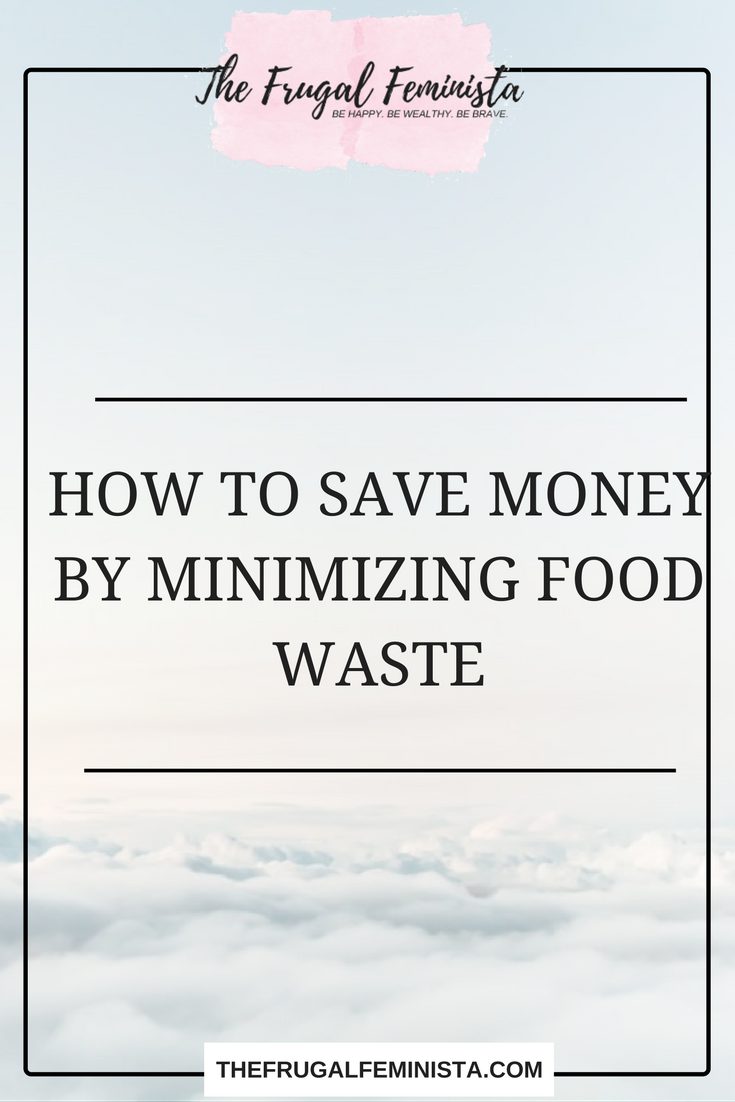 How many of you have opened up your fridge and just stared at the food that had gone bad? Maybe you saw sweet potatoes with mold and spinach that had turned into liquid. Sounds pretty disgusting, right? Well that is what happens when buy too much food at the grocery store and then it just sits and gets gross in our fridge. This overspending can happen for a few reasons.
How many of you have opened up your fridge and just stared at the food that had gone bad? Maybe you saw sweet potatoes with mold and spinach that had turned into liquid. Sounds pretty disgusting, right? Well that is what happens when buy too much food at the grocery store and then it just sits and gets gross in our fridge. This overspending can happen for a few reasons.
- We may have this grand vision of cooking more than we realistically can.
- We saw a cool recipe from the Food Network that we just have to try!
- Sometimes the grocery store bargains on fresh produce lure us into buying too much produce, because you think that you are getting a great deal because the per unit price is so low.
- We shop when we are hungry.
All of these reasons to buy seem like good ideas at the time, however what may start as a good intention – eating healthy, saving money, buying fewer lunches, etc. – can end up being a source of cash drain. For example, if you find a great deal on enough groceries to feed a family of four, but you are only a household of 1 and you can’t consume the food, what happens? Often times, we end up cooking less than we anticipate, and then throw away the unused produce and perishable items when they spoil.
This situation is very common in the United States. According to the National Resource Defense Council, the average American throws away between $28-$43 worth of food per week ($1,460 – $2,240 annually). Food waste from US households is approximately $40B annually! Two-thirds of household food waste is due to food spoilage because it wasn’t used in time. The other third of food waste comes from cooking or serving too much food. Imagine what we could do with that money!
As you think about how you buy and consume food, think of ways that you can tweak your grocery shopping strategy in the future to minimize waste. If you want to shop and cook at home more, do not abandon those goals, because the health and cost savings associated with it are totally worth it. However, please shop responsibly, and don’t over-anticipate your ability to commit. $1,460 is a lot of money to throw in the garbage!
To help you along this journey, here are 5 strategies to minimize food waste:
- Survey your kitchen prior to going grocery shopping
- Shop with a list to avoid excess food purchases just because they are on sale
- Only buy fresh produce that you are confident that you can use
- Buy more frozen veggies (and some fruit) to avoid risk of waste
- Develop a strategy to freeze items that you haven’t consumed within a certain period of time
Think about how you can use these, and other, strategies to reduce your food waste. Consider how this small change will increase your savings and reduce your impact on the world’s resources.
How do you manage food waste? Are you doing a good job or do you need to improve?
Share with me!
Aisha Taylor is a #1 Amazon Best Selling Author of the book “5+5 FNPhenomenal Ways to Save $100 This Week Without Killing Your Lifestyle”, and the Founder of FNPhenomenal (Frugal –n- Phenomenal). FNPhenomenal helps women to break the vicious cycle of making money, but not keeping it. FNPhenomenal provides education about money management, empowers women to take control of their lives, develop a healthier relationship with money, and pursue being phenomenal.
Visit Aisha online at www.FNPhenomenal.com Follow Aisha on Instagram/Twitter: @FNPhenomenal Facebook: facebook.com/FNPhenomenal
If you need deeper work around healing your relationship with money or overcoming your blocks and fears, maybe it’s time for some money therapy.
